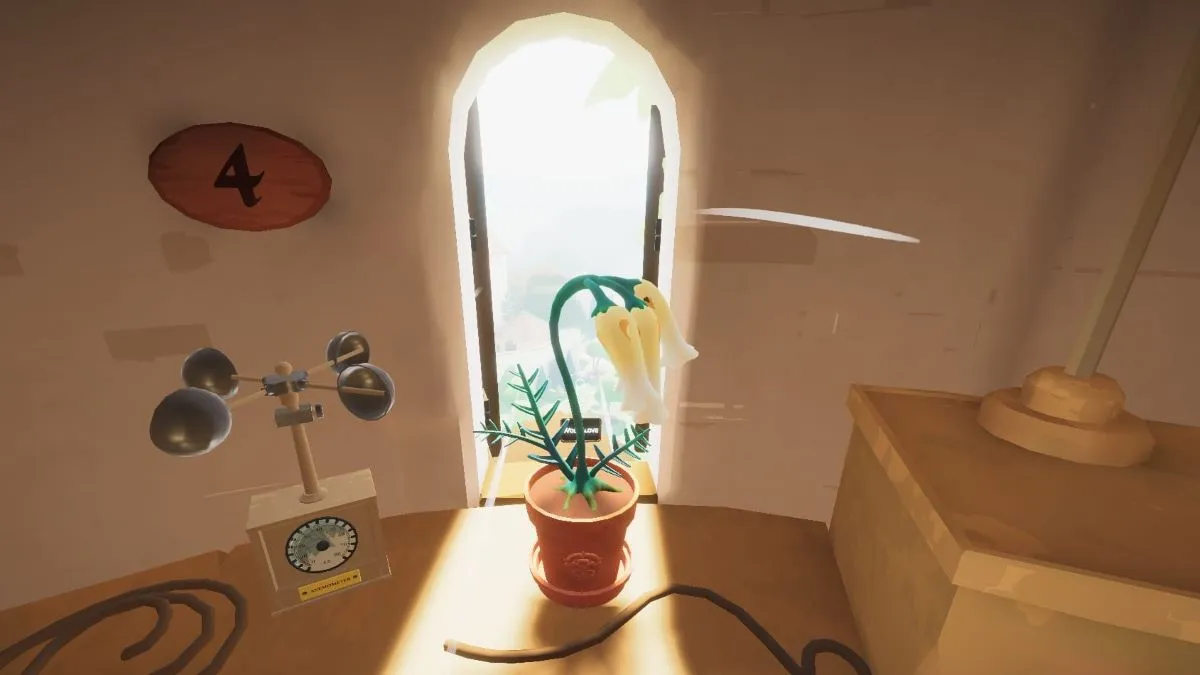Doesn’t last forever, thankfully
Infinite runners have their place in gaming. After Canabalt, a seemingly endless stream of 2D endless runners showed up for a piece of the action. After Temple Run, the same happened for behind-the-back 3D runners. Infinity Runner adopts the latter style but takes on a first-person perspective.
Despite the name, Infinity Runner isn’t actually an infinite runner (at least, not in the default mode). The levels are designed rather than procedurally generated. It has a clear beginning and a clear-ish end. That last part is great, because once I finished I celebrated the idea of never having to play it again.

Infinity Runner (Linux, Mac, PC, PlayStation 4 [reviewed], Wii U, Xbox One)
Developers: Wales Interactive
Publisher: Wales Interactive
Released: April 22, 2015
MSRP: $6.99
On paper, gameplay in Infinity Runner is simple. The protagonist automatically runs forward while the player controls jumping, sliding, turning, and positioning in one of three lanes. Right away, control is the first problem. While it is responsive enough for the reaction-based gameplay, it isn’t intuitive. Where the left thumbstick is used to avoid obstacles on the x-axis, it doesn’t control jumping and sliding, the abilities used to avoid obstacles on the y-axis. Further, with those actions mapped to L2 and R2, there isn’t an ingrained connection between button and function (as there would be if it were L1 and L2). Throughout the game to the last level, I found myself jumping when I meant to slide and vice versa.
The right thumbstick controls looking, which itself controls turning left or right when the path forks. Since this occupies the same “obstacle avoidance” area in my brain, I found myself wanting the left stick to take care of turning too. It doesn’t. It almost feels like playing a legacy first-person shooter after years of practice with the current standard control scheme; the muscle memory needs to be retrained for quick decisions.
To say that quick decisions are necessary would be an understatement. Early on there are doors that block view of the upcoming hallway, and those are fine. Later on, the obstacles to avoid basically require rote learning and trial-and-error play. Not only are the necessary moves not telegraphed giving enough time for reaction, they sometimes are not clear at all. There were several sections where I could tell something needed to be avoided, but it’s not obvious whether the hazard required a jump, a slide, a strafe, or some combination. There were some sections where I wasn’t even sure what got me.
Compounding on that is the unnecessary retreading in place due to a lives system. In each level, there are checkpoints where a runner can restart if he meets an unfortunate end further on, but only a limited pool of lives is available; after those are spent, it’s back to the beginning of the level. Coupled with poor feedback on what exactly needs to be done, this leads to situations where a single obstacle will end a run and players will have to spend the time to get back to that point just to experiment to see how to surpass it.
As a point of example, there is one section late in the game where the hero is jumping on a series of spaceships, then must jump from the last one in order to make it back to a catwalk. By jumping the gap onto the last ship, there isn’t enough time to jump off. I tried the first jump as early as possible but the recovery time kept me from being able to hit the second jump in time. It turns out that the first jump is totally unnecessary; despite the gap between ships, the player is meant to just walk between them and jump off the last one.
Infinity Runner does a decent job of tweaking gameplay between levels to keep it from being totally homogeneous. Sometimes the power will cut out and only the emergency lighting is visible. Sometimes the running will switch to freefalling. Sometimes there is combat made up of quick-time events. Sometimes the protagonist turns into a wolf and runs through a tube. None of it is particularly good, but at least it’s different.

As with the gameplay, the story sounds fine at a base level but falls apart in practice. The protagonist is a werewolf trying to escape from the spaceship Infinity. He doesn’t know he’s a werewolf at first, but then disembodied female voice Riley tells him. Disembodied female voice Riley says a lot of things at the player, generally through stilted voice work and cringeworthy writing. Sometimes she says things when the player would really rather be concentrating on not dying. Often she echoes through the DualShock 4’s speaker, way too loudly.
One time disembodied female voice Riley told me to jump. I jumped and I died because I jumped too soon. I should have waited and then jumped when I would have jumped anyway. Another time disembodied female voice Riley told me to run and I snorted. Do I have a choice? A little way into the game disembodied female voice Riley’s lips stop moving when she talks, but it’s an improvement because the lip movements never matched her words to begin with.
Shortly after disembodied female voice Riley tells the protagonist that he is a werewolf, the pair sees a different werewolf, and then disembodied female voice Riley incredulously says she doesn’t know what that monster is. It’s a werewolf; you just talked about werewolves; how can you not know what that is? I don’t like disembodied female voice Riley very much.
After the final boss battle quick-time event (complete with its own trial-and-error sequence that had me restarting the level), disembodied female voice Riley is finally ready to divulge more information about her identity and motivations to the player, but then the boss shows up again and interrupts the communication. And then: “To be continued.” It’s optimistic, at least.

The graphics are shiny and the art direction is passable. Most of it takes place in the drab gray hallways of a spaceship, but there are flashes of reds, greens, and blues denoting hazards. The music is pretty hard to bear; it has a sort of high energy industrial electronic feel to it that is not conducive to concentrating. There’s a Trophy for turning the music off. I did that and found the experience to be slightly more tolerable. The message that Trophy sends: this music is bad and the developer knows it.
There isn’t a lot to like here. Banal gameplay, cheap deaths, poor feedback, dull quick-time event combat, bad acting, worse writing, and an overall amateurish presentation. The most enjoyable part of this experience was venting to a colleague about how bad it is.
[This review is based on a retail build of the game provided by the publisher.]





